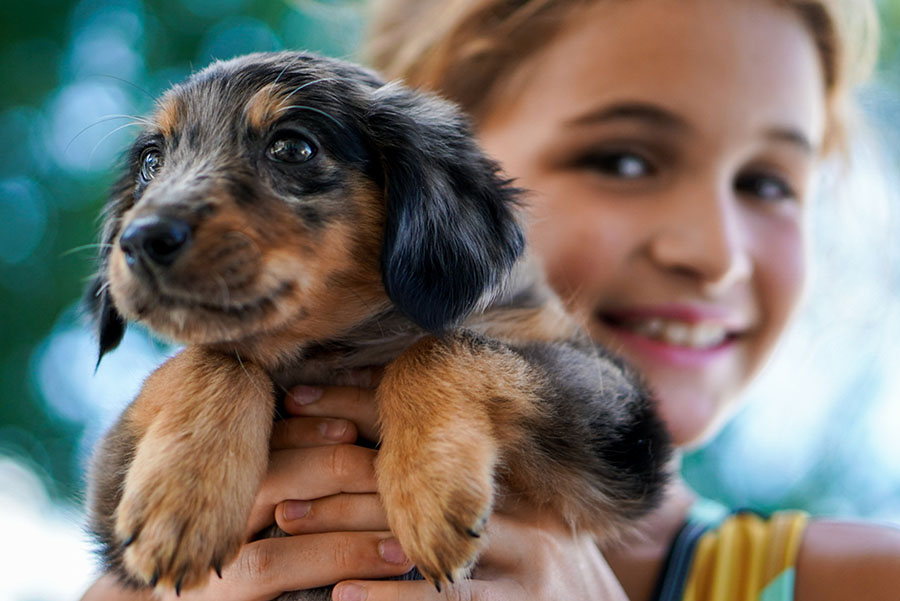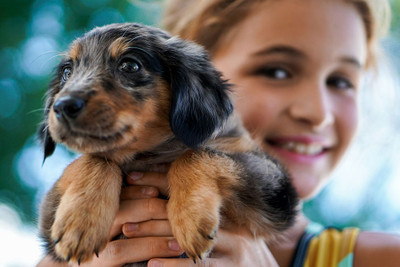Posted by Zena Conkey on Jul 21, 2021
Encouraging dogs and children to get along shouldn't take too much effort in a happy family. There can be complications though and it’s important to do it right.
Not all dogs like children. Small humans act oddly, move differently and make really funny noises. Some dogs can’t cope with such “odd” behaviour and will react with fear, sometimes even aggression to try and tell a child to go away. Read on and learn about the mutual respect that we need to nurture in order to ensure a happy relationship between dogs and children.

When dogs and kids meet it can be a great, fun and enjoyable playtime or it can be a nightmare. It’s vitally important to ensure that dogs and children meet on good terms no matter how old each of them are.
So if you live with a child it’s important to teach your little one the following rules:
- Never approach a dog without permission from its owner.
- Never approach an unattended dog.
- Always show respect to the dog and wait for the animal to ask for physical attention before giving it.
This will avoid any miscommunication that can easily happen when a child approaches a dog who is scared, worried or stressed.
As far as your dog is concerned it’s important to allow interaction with children but it must be the positive kind. Gentle games, careful handling and respectful playtime will show your dog that this small person is actually quite nice, fun and can usually drop some tasty food scraps on the sly on a regular basis..
A puppy should be allowed to learn positive experiences around children. The puppy that is born and whelped in a family home with careful kids will usually become really good with children. The puppy that becomes scared, has a bad experience or is hurt by a child can develop a serious fear of kids that is difficult to overcome.
If your dog has never encountered children it’s important to remember that even one scary experience, regardless of your dog’s age, can cause quite a strong fear reaction that once learned can be difficult to get rid of. So don’t allow things to get out of control, whether you are at the park or entertaining family at home always give your dog an escape route if there are children around.
By handling introductions with respectful caution you will help your dog to develop the best possible relationship with the children in his life. If you are a parent you will be showing your child basic respect for another species’ which is a habit that all children should learn from a very early age.
Dogs and kids should naturally be friends, yet if your dog is not keen do not make him accept the unflinching attention of children, because this can cause severe anxiety for him, which isn’t fair at all. Like humans, dogs should be allowed to choose who they want to be friends with, it’s only fair.
Family pets are a great way to teach children respect for life and compassion, among other things, and it’s important that introductions are done correctly to ensure a healthy, happy future relationship between your children and your dogs.
Children of any age are naturally going to be excited at the thought of the new addition to the family, and here are some things to consider when you’re making the introductions. Guaranteed happiness all round!
Before your New Puppy Arrives
It’s important that you talk to your children about how they should behave around your puppy, whatever age they are, before he comes home with you.
Teaching children how to respect and deal with animals puts them in great stead for the rest of their lives, so getting this in early is a real benefit to them. Make sure they know the right way to handle your new puppy, and that they need to speak softly and act calmly around him so as not to scare him.
Do lay down some ground rules straight away, like no pulling of tails and ears and no getting on his back! It’s important to teach your children boundaries when it comes to dogs, because a frightened puppy may lash out or bite an excitable child who’s being too boisterous around him.
Getting your children involved in caring for the puppy is a wonderful way to start building that bond, and it could even start before he arrives. Taking them shopping when you buy all the puppy basics and letting them help you choose what you buy, will make them feel involved in his life from the very beginning. Once your puppy is with you, give them responsibilities depending on their age, such as feeding him, taking him for walks, training him and cleaning up after him. Not only will this mean that they form a closer bond with him, they’ll also start to learn about taking responsibility for animals.
Introducing the kids
When it comes to actually making the introductions between your new puppy and your children, the most important thing to remember is to take it sloooowly. It’s going to be a big change for a small puppy and he might be nervous at being in a new home, away from his mother and his littermates. Your children are naturally going to be thrilled, and want to pet him and play with him, but they need to wait for him to approach them, and handle him gently if he does.
If your children are younger, start off with short introductions to get them used to the puppy and vice versa. You can increase the length of time they spend together until you’re happy that there aren’t going to be any problems, keeping an eye on how things are progressing until you’re 100% comfortable. By supervising the introductions yourself, you won’t need to worry about things getting out of hand.
Once your new puppy and your children are totally comfortable with each other, they can look forward to a lifetime of friendship.
